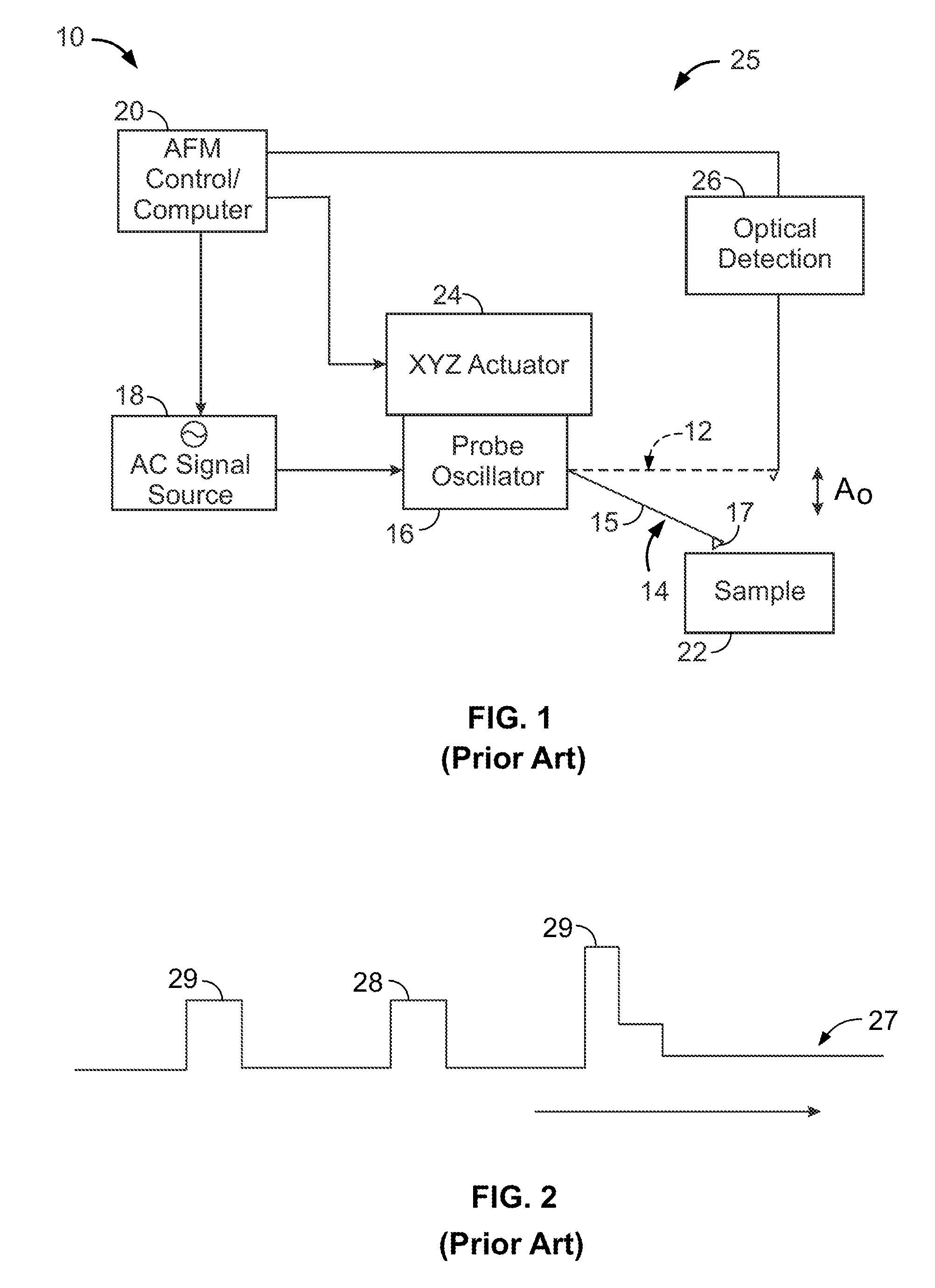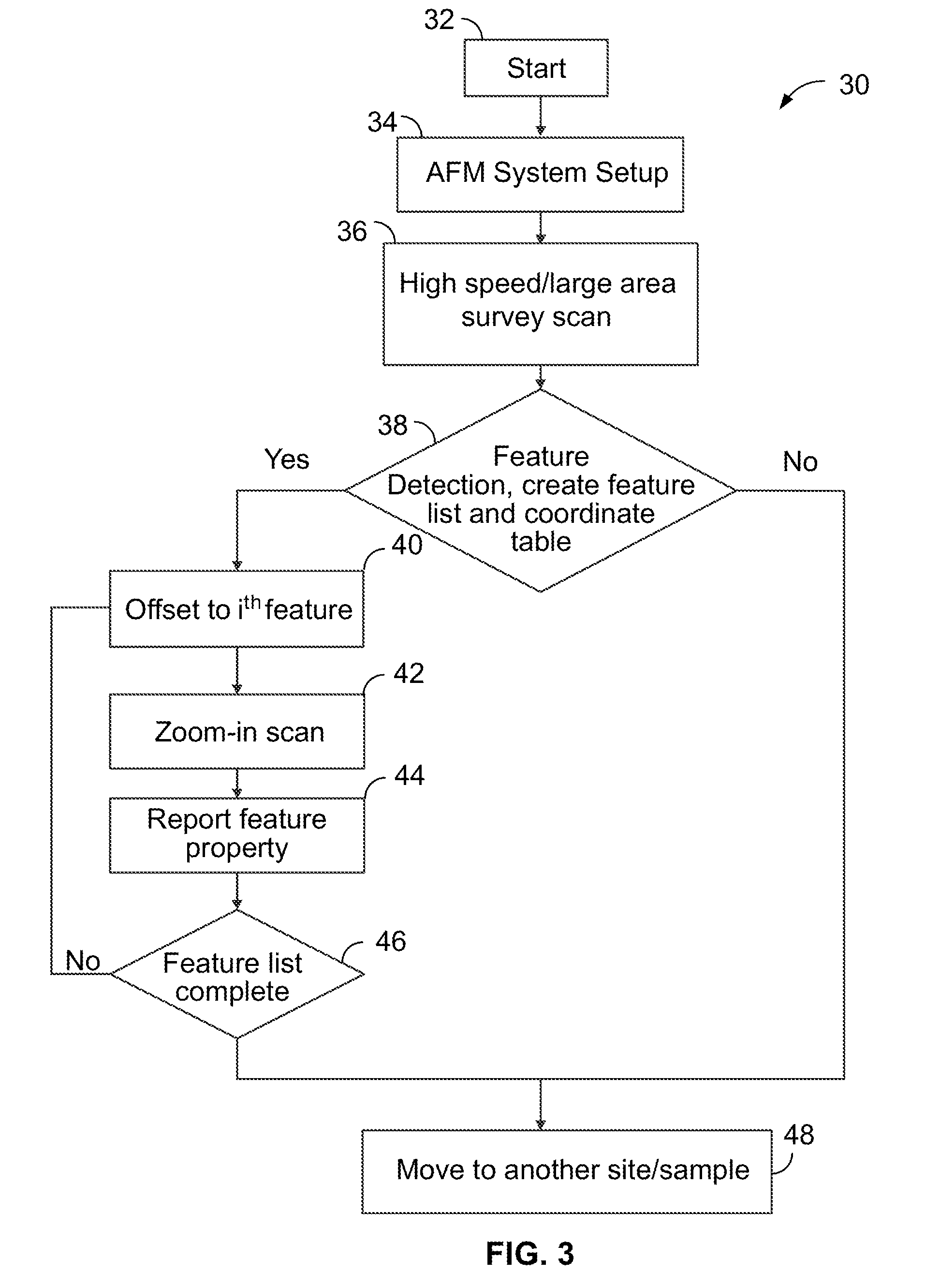Method and apparatus of automatic scanning probe imaging
a scanning probe and automatic technology, applied in the direction of instruments, surface/boundary effects, measurement devices, etc., can solve the problems of inability of experienced afm inability to establish correlation during real time imaging, and inability of operators to make real time decisions about zooming in the area. achieve the effect of automatic identification, positive identification of features, and greater resolution
- Summary
- Abstract
- Description
- Claims
- Application Information
AI Technical Summary
Benefits of technology
Problems solved by technology
Method used
Image
Examples
Embodiment Construction
[0045]Referring initially to FIG. 3, the automatic imaging process 30 of the preferred embodiments contains the following steps. According to an exemplary embodiment, process 30 may be implemented using a feature identification engine implemented in software, hardware or firmware and configured to implement the methods described herein. According to the exemplary embodiment, the feature identification engine may be implemented as a software process within AFM Control / Computer 20, and will use multi-dimensional data including, for example, amplitude, phase, deflection, trace and retrace data, etc. during realtime imaging to identify the feature of interest and distinguish the identified feature of interest from other data such as noise. After a start-up and initialization step in Block 32, the state of an imaging operation includes having the system automatically set cantilever probe operating parameters in Block 34. AFM system set-up includes engaging probe with the sample so as to ...
PUM
| Property | Measurement | Unit |
|---|---|---|
| frequency | aaaaa | aaaaa |
| height | aaaaa | aaaaa |
| scan size | aaaaa | aaaaa |
Abstract
Description
Claims
Application Information
 Login to View More
Login to View More - R&D
- Intellectual Property
- Life Sciences
- Materials
- Tech Scout
- Unparalleled Data Quality
- Higher Quality Content
- 60% Fewer Hallucinations
Browse by: Latest US Patents, China's latest patents, Technical Efficacy Thesaurus, Application Domain, Technology Topic, Popular Technical Reports.
© 2025 PatSnap. All rights reserved.Legal|Privacy policy|Modern Slavery Act Transparency Statement|Sitemap|About US| Contact US: help@patsnap.com



